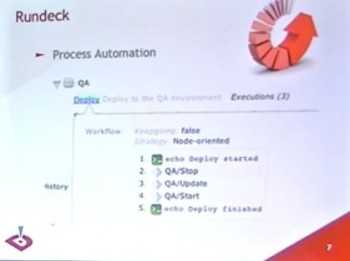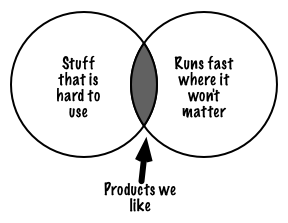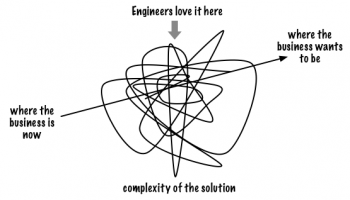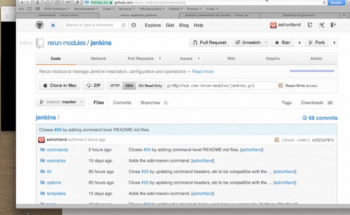DevOps expert Damon Edwards discusses why Ops should neither resist innovation nor be a scapegoat when things go wrong.
Innovation is a mantra in business, one that the CIO hears more and more. As IT leaders feel pressure to be more responsive, faster moving, and more innovative, Operations leaders worry that their mission—the smooth, steady delivery of high-quality IT services—may be jeopardized by rushed experimentation.

Damon Edwards, co-founder of IT consultancy DTO Solutions, has spent more than a dozen years working on web operations from both the IT and business angles. A major DevOps proponent, he recently posted about “using DevOps to turn IT into a strategic weapon.” Discover Performance reached out and asked him to talk about how Operations leaders—and IT executives in general—should approach innovation.
The (completely achievable) goal, he says, aligns IT goals with business goals by “removing all of the bottlenecks, inefficiencies, and risks between a business idea (the ‘ah-ha!’) and a measurable customer outcome (the ‘ka-ching!’).”
Q: Does there tend to be a basic disconnection between the business and IT on the subject of innovation? Why?
DE: “Disconnect” has become somewhat of an ugly euphemism inside corporations. Unfortunately it’s become code for “I’m right and you’re wrong.” In reality, a “disconnect” is usually just two people operating and making assumptions based on differing definitions. As a result, you get unfortunate infighting between people who, in all other ways, both desperately want the company to succeed.
Talk to folks in the technology roles and they tend to see innovation as being synonymous to invention. There is a rich legacy of invention in the technology world. Getting your name on a patent was an ultimate trophy. Much of the myth and lore of tech and geek culture is built on a love of tinkering and invention. Now contrast that to what you see when you visit the business folks. They see innovation as the application of new ideas to create value for their current customers and to attract new customers. Unfortunately, now that you can win a patent for what is essentially a business idea, the invention/innovation distinction is even more muddled.
If executives let the two core parts of the company operate under completely different definitions, you’re bound to have conflicts and gridlock. You have to make it clear what innovation is and isn’t for your company, and how you’re going to measure its impact.
Q: Isn’t innovation an inherently risky endeavor?
DE: There is always some level of risk with innovation because you’re operating in the unknown. You don’t know if the customers will respond. You don’t know if the response will be what you want or expect. When the revenue and health of a company are tied to getting a large number of favorable responses, there is risk.
But I should be clear that innovation, especially on the web, should be low risk from a technology perspective. You reach your customers through standard interfaces and over standard protocols. We know how to deploy safely 20 times a day. We know how to scale services to hundreds of millions of users. We know how to manage petabytes of data. If you’re running a web company, your innovation risk should almost exclusively be on the business end, not the technology end.
Q: When risks compromise IT performance, heads roll, especially on the Ops team. How do you decrease the risk of innovation for Ops?
DE: Again, I’d ask what went wrong organizationally that put the Ops team in a position of risk. Was the business asking for something that was never done before and needed some never-thought-of-before technology to work? Doubtful. Did the developers change their underlying framework or introduce new technology that wasn’t properly vetted or Ops didn’t know how to handle? Possible. Did Ops upgrade or switch a technology component? Also possible.
My point is that, while Ops is the common scapegoat, the problem often started somewhere else and likely had nothing to do with the business being more innovative. So Ops gets blamed—which is like blaming the canary for the gas in the coal mine—and in response Ops starts saying no all the time. Suddenly “innovation” is the bad guy when it really had nothing to do with it.
Q: You say innovation is a numbers game. How so—and how does DevOps fit in?
DE: Innovation is a numbers game because, like most things in life, business has a countdown clock. If you’re a startup, it’s a simple clock. It’s the amount of cash left in the bank. If you are an established company, it’s a bit more complicated. It could be how long until a competitor beats you to the punch. It could be how long the CEO gives you to meet a goal. The point is, one way or another, you have a finite amount of time to absolutely delight the hell out of your customers by figuring out what they want and delivering exactly that to them.
You don’t control the clock and you don’t control the customer—what do you control? You can control the number of chances you get to delight the customer before the clock runs out. That’s where DevOps comes in. DevOps aims to remove all of the bottlenecks, inefficiencies, and risks between a business idea (the “ah-ha!”) and a measurable customer outcome (the “ka-ching!”). When you remove all of that, you get a lightning-fast and highly reliable service delivery pipeline that spans from the edge of Development all the way to the datacenter. That allows you to run more experiments, get faster feedback, and take more “shots at the prize.”
Q: DevOps promises a more responsive, more collaborative IT department that can realize business ideas faster. So what is holding back its widespread adoption? What’s the challenge or downside?
DE: There was a movie called “Charlie Wilson’s War” that had a great line between Tom Hanks, playing a U.S. Congressman, and Philip Seymour Hoffman, playing a CIA agent. Hoffman asks, “Why is Congress saying one thing and doing nothing?” Hanks replies, “Well, tradition mostly.”
All jokes aside, tradition is a powerful thing and hard to break. Tradition, or “what we’ve always done,” in IT is no different. There was a thread on Slashdot just this past month that asked whether developers should be allowed to deploy their own applications. You should have seen the outcry. The sheer number of commenters who shot down the idea as pure heresy was shocking. And the richest part of all of their denunciation was that the mob said over and over that the idea would “never work at a real company with real revenue at stake.” I thoroughly enjoyed sending that to John Allspaw, who runs all of technology at Etsy, and Jesse Robbins, who was in charge of risk and disaster planning for operations at Amazon. Etsy does over $600 million of transactions per year, and Amazon does about $50 billion in revenue. In both companies, developers are the ones who deploy and own the uptime for their own code. John’s reaction to the thread was a simple yet priceless one: “OMG.”
Q: Cloud and SaaS services promise flexibility and value to the business, but may seem to undermine or complicate traditional Ops teams. How do these disruptive factors fit with efforts to embrace innovation?
DE: We have a saying that we use a lot at DTO Solutions: “Moving to the cloud without changing your processes is just expensive and complicated Hosting 2.0.” The cloud gives you a new abstraction layer that provides all sorts of benefits in the form of flexibility and speed. But to take advantage of those benefits, you first must change your application lifecycle and operating procedures. Furthermore, you have to revisit the architecture and deployment model for your applications. Often you’ll find that the choices that were made in the past were based on outdated ideas like the need for hardware conservation or to fit a monolithic codebase into a waterfall project delivery cycle. The conditions have changed, so companies need to rethink how and why they do things within the context of the new conditions.
The cloud removes all sorts of infrastructure barriers that makes moving at a faster pace even possible. DevOps addresses the process and cultural issues. Agile addresses the software development process issues. Customer Development and The Lean Startup remove the business process issues. You add it all up and you are ready for your organization to move at speeds that you never thought were possible.
************************************




















































